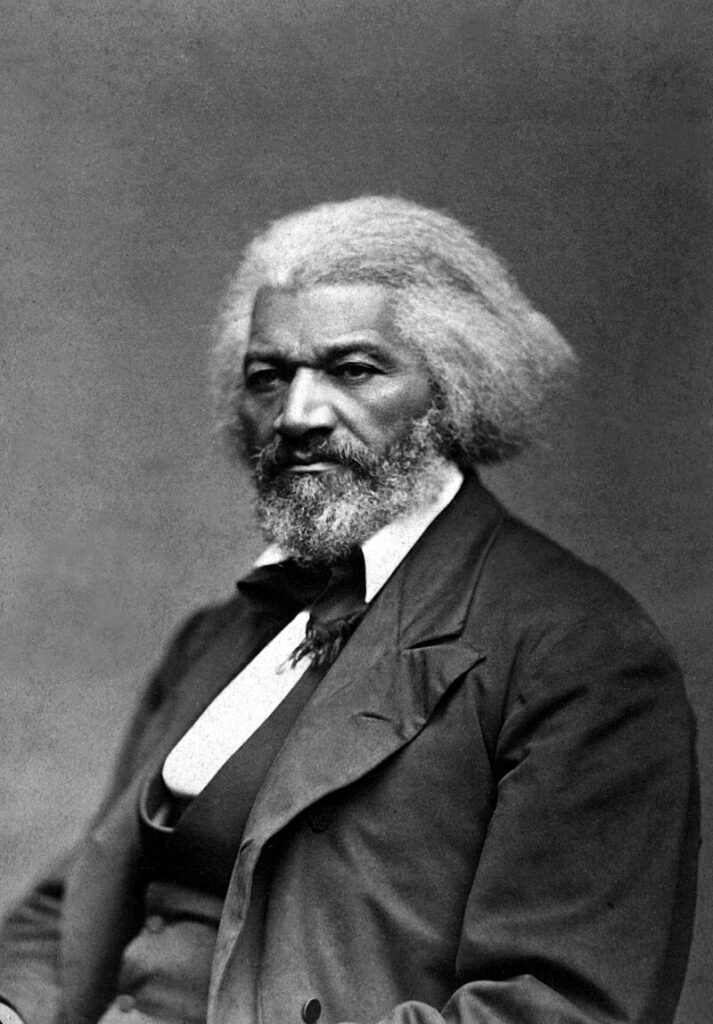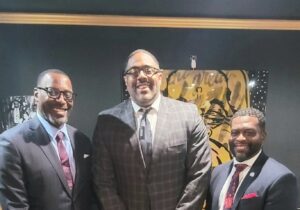BHM: Douglass Day Honors Legendary Black Abolitionist

Photo of Frederick Douglas by George Kendall Warren, courtesy of Wikimedia Commons.
BY DANIEL WINNER | Correspondent for AC JosepH Media
Feb. 14 marks an exceptionally pertinent day for Black History Month, and no, it’s not Valentine’s Day. Feb. 14 also marks Douglass Day, a keystone annual program that recognizes the birthday and achievements of Frederick Douglass, who was perhaps the most important leader of the 19th-century civil rights movement.
The celebration of Douglass Day eventually led to the creation of Black History Month, in which the month of February is devoted to sharing US history and learning about the abundance of accomplishments and persistent struggles of African Americans throughout the centuries. But who exactly was Frederick Douglass and how did he earn so much recognition?
Frederick Douglass was born enslaved as Frederick Augustus Washington Bailey on Holme Hill Farm in Talbot County, Md. As was common in his day, slaves were denied information about their age and family history, leaving his actual date of birth a mystery.
Despite this, Douglass later estimated his birth as taking place sometime in February 1818, eventually settling with the 14th as the day to mark his day of birth.
After one failed attempt at escaping the conditions of slavery, Douglass eventually made it to Wilmington, Del. by train, to Philadelphia by steamboat, and finally to New York City by train.
Unfortunately, New York was not much safer for runaway slaves. Slave catchers would travel to the city in search of escapees, and both Black and white locals had few reservations about cooperating with authorities in exchange for money. Douglass and his wife Anna Murray soon fled to New Bedford, Mass.
He later adopted the last name “Douglass” at the suggestion of a friend who was inspired by the name of an exiled nobleman in the poem “The Lady of the Lake” by Sir Walter Scott. It was at this time that Douglass began work as a free man, albeit as a common laborer due to the ubiquity of racial prejudice in New Bedford’s labor force.
As a member of the Massachusetts Anti-Slavery Society and the American Anti-Slavery Society, Douglass took it upon himself to travel around the country promoting abolition. This was a time when Douglass expressed his early philosophical views on slavery in response to Black minister Henry Highland Garnet’s proposal for a resolution that called for insurrection by Blacks against slaveholders. Douglass opposed, instead opting for “moral suasion,” the appeal to the fact that slavery is immoral and should be countered with nonviolence.
Douglass wrote three autobiographies: Narrative of the Life of Frederick Douglass, an American Slave, “written by himself” (1845); My Bondage and My Freedom (1855) and Life and Times of Frederick Douglass (1881). The first of these three became immensely popular in Europe and even drew the attention of Hugh Auld, Douglass’ past owner, who was insistent on returning Douglass to slavery. In response, Douglass traveled to the United Kingdom, where he received adequate funding to publish his first newspaper.
Douglass published four successful newspapers following his two-year lecturing tour in Great Britain: The North Star (1847-51), Frederick Douglass’ Paper (1851-60), Douglass’ Monthly (1859-63), and the New National Era (1870-74).
He actively recruited Black soldiers for the Union Army, including his sons Charles and Lewis. He became the first Black U.S. Marshal as well as the most photographed American man of the 19th century due to the prestige of his efforts toward social justice.
Frederick Douglass passed away in his late 70s at his home in Cedar Hill in Anacostia, Washington, D.C. on February 20, 1895. In 1962, the estate became part of the National Park system in 1962 and was designated the Frederick Douglass National Historic Site in 1988. The U.S. Library of Congress digitized the estate’s library collection, including 7,400 items (38,000 images) of Douglass’ writings including speeches, journals, letters, and other documents.
Douglass Day was created in 1897 by Mary Church Terrell, a teacher and civil rights activist, who was among the first African American women to earn a college degree.
As the day falls on Douglass’ supposed day of birth, this eventually gave rise to the larger annual celebration of Black History Month in February.
In 2017, a group of students at the University of Delaware helped revive Douglass Day, and it has grown in popularity ever since.
This year, Penn State’s Center for Black Digital Research (CBDR) and the Library of Congress (LOC) in Washington, D.C. have partnered up by signing a three-year collaboration agreement in support of the By the People initiative, a crowdsourced program that invites participants to transcribe the library’s digital collection.
Past years’ celebrations have focused on the transcription of other notable figures’ works such as those of Anna Julia Cooper in 2020, Mary Church Terrel in 2021 and Mary Ann Shadd Cary in 2023. This year’s 8th Annual Transcribe-a-thon will be focused on the library’s collection of Douglass’ general correspondence, to complete 8,731 pages by the end of the day.
The Douglass Day 2024 Team states on the official Douglas Day website, “Douglass Day is a collective action for Black history. Each year, we feature a different collection of Black history. We invite you to learn about the Douglass Day principles and the longer history of Douglass Day.”
Partners and supporters for Douglass Day 2024 include the Center for Black Digital Research at Penn State, the Colored Conventions Project, the Anna Julia Cooper Digital Project, the Moorland-Spingarn Research Center at Howard University, the Princeton University Center for Digital Humanities, the PSU Libraries, the PSU Center for Humanities and Information, and the PSU College of Liberal Arts, the American Studies Association for a Community Partnership Grant, Zooniverse, and By The People at the Library of Congress.
Frederick Douglass remains in the history books as a pioneer of civil rights and a hero in American social reform. He has earned the title “Lion of Anacostia.” In the early 20th century, before the formation of Black History Month, his achievements were recognized and celebrated during Negro History Week.
Douglass is remembered today as a prime example of a man who successfully transitioned from slavery to the upper echelons of American society, having spent his entire life working for the freedom of Black Americans everywhere.
Learn more about Douglass Day at www.douglassday.org.
EDITOR’S NOTE: Daniel Winner has a double major in Religious Studies and Japanese from Penn State University and has traveled internationally to the Far East on several occasions. His insights on Buddhism and Asian culture give a unique view of historical and modern trends. He will be serving as a contributor for Front Runner New Jersey.
Follow Us Today On:
Note from AC JosepH Media: If you like this story and others posted on Front Runner New Jersey.com, lend us a hand so we can keep producing articles like these for New Jersey and the world to see. Click on SUPPORT FRNJ and make a contribution that will go directly in making more stories like this available. Thank you for reading.





